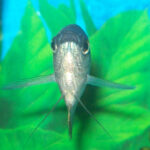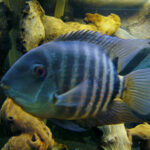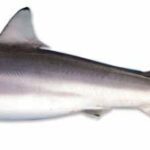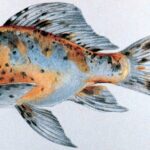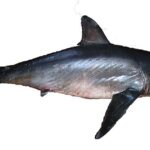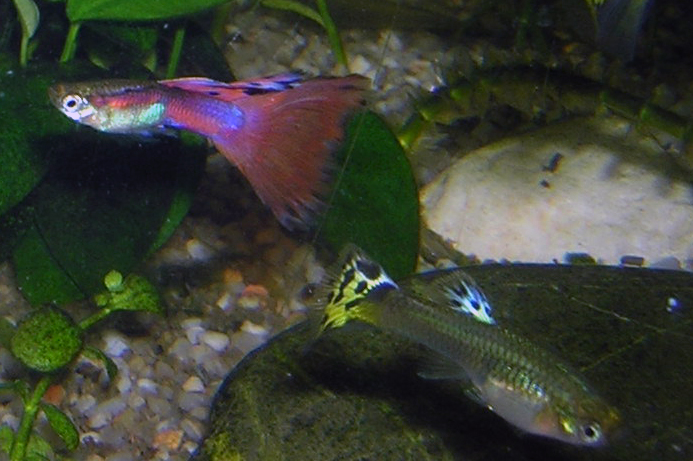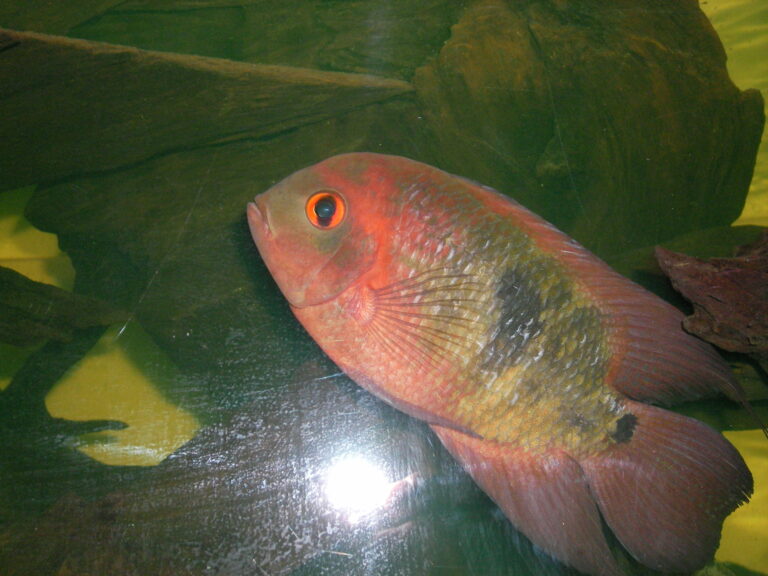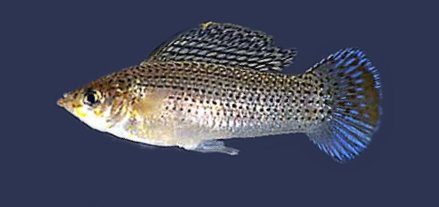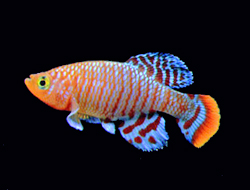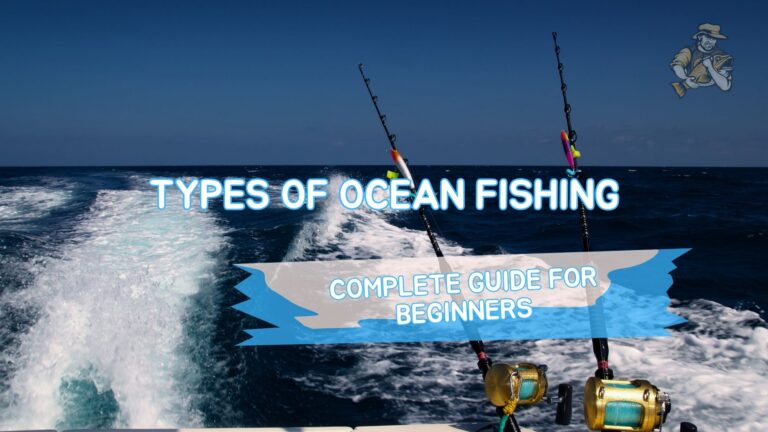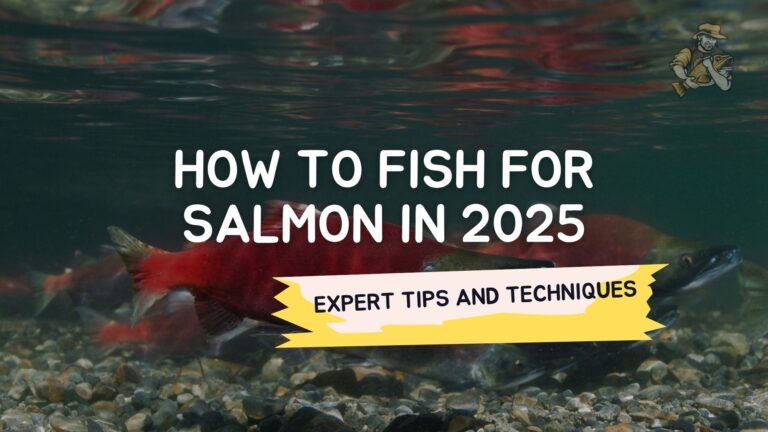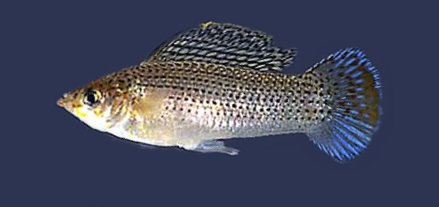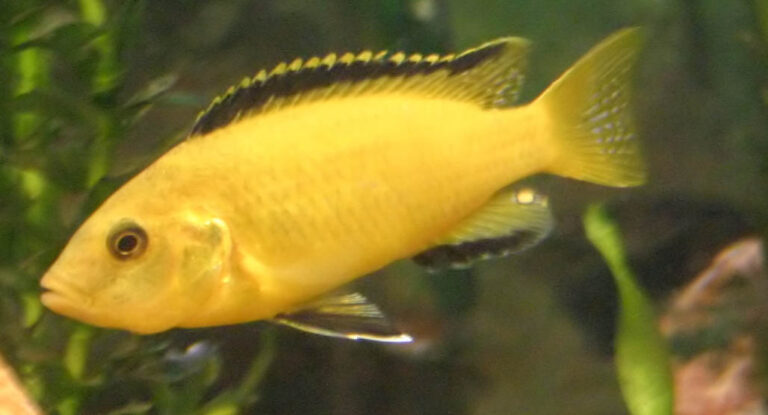Siamese Fighting Fish
By Ryan Maron | Last Modified: June 10, 2025

The Siamese Fighting Fish, scientifically known as *Betta splendens*, stands as one of the most recognizable and culturally significant freshwater fish species in the world. This labyrinth fish has captivated aquarists and researchers alike through its extraordinary territorial behavior, vibrant coloration, and remarkable adaptability to diverse aquatic environments. Native to the shallow waters of Southeast Asia, the Siamese Fighting Fish plays a crucial ecological role as both predator and prey within its natural habitat, maintaining population balance among smaller invertebrates while serving as a food source for larger aquatic predators.
The species holds profound cultural importance throughout Thailand, Cambodia, and Vietnam, where organized fighting competitions have occurred for centuries. Beyond its cultural significance, *Betta splendens* represents a critical model organism for behavioral research, particularly in studies examining aggression, territorial defense, and reproductive strategies. The fish’s unique labyrinth organ allows it to survive in oxygen-depleted waters that would prove fatal to most other fish species, making it an essential component of shallow wetland ecosystems throughout the Mekong River basin.
| Feature | Details |
|---|---|
| Common Name | Siamese Fighting Fish |
| Scientific Name | Betta splendens |
| Family | Osphronemidae |
| Typical Size | 6-8 cm (2.4-3.1 inches), 2-5 grams |
| Habitat | Shallow freshwater wetlands, rice paddies |
| Diet | Carnivorous – insects, larvae, small crustaceans |
| Distribution | Southeast Asia, Mekong River basin |
| Conservation Status | Vulnerable (wild populations) |
Taxonomy & Classification
The Siamese Fighting Fish belongs to the family Osphronemidae, commonly known as labyrinth fish, which encompasses approximately 133 species across 15 genera. Within this taxonomic framework, *Betta splendens* represents the most extensively studied member of the genus *Betta*, which contains over 70 recognized species distributed throughout Southeast Asia. The species was first scientifically described by French ichthyologist Charles Tate Regan in 1910, though local populations had recognized distinct varieties for centuries prior to formal classification.
Recent molecular phylogenetic studies have revealed that the *Betta* genus diverged from other labyrinth fish approximately 25 million years ago during the Oligocene epoch. The *splendens* complex, which includes *B. splendens*, *B. imbellis*, *B. mahachaiensis*, and *B. smaragdina*, represents a monophyletic group that evolved within the last 2-3 million years. These closely related species demonstrate varying degrees of aggressive behavior and coloration patterns, suggesting rapid evolutionary divergence driven by sexual selection and territorial competition.
The taxonomic classification places *Betta splendens* within the suborder Anabantoidei, distinguishing it from other freshwater fish through its possession of the labyrinth organ. This specialized respiratory structure, located in the suprabranchial chamber, allows the species to extract oxygen directly from atmospheric air, providing a significant evolutionary advantage in oxygen-poor aquatic environments.
Physical Description
The Siamese Fighting Fish exhibits remarkable sexual dimorphism, with males displaying significantly more elaborate finnage and intense coloration compared to females. Adult males typically reach lengths of 6-8 centimeters, featuring elongated dorsal, anal, and caudal fins that create an impressive visual display during territorial encounters. The body structure follows a laterally compressed fusiform shape, optimized for quick acceleration and precise maneuvering within dense aquatic vegetation.
Wild-type Siamese Fighting Fish demonstrate relatively subdued coloration, typically displaying dark brown or green base colors with iridescent blue or red highlights along the fin margins. However, centuries of selective breeding have produced an extraordinary array of color morphs, including solid reds, blues, yellows, and multicolored variants. The most prized specimens exhibit metallic sheens created by specialized chromatophores containing crystalline platelets that reflect specific wavelengths of light.
Female Siamese Fighting Fish present a more conservative appearance, with shorter fins and less vibrant coloration that provides enhanced camouflage during the vulnerable spawning period. Their bodies tend to be slightly more robust than males, particularly during reproductive seasons when egg development creates visible abdominal distension. The species demonstrates considerable phenotypic plasticity, with individuals capable of adjusting coloration intensity based on environmental conditions, social status, and emotional state.
The distinctive labyrinth organ, visible as a dark mass behind the gills, represents the most significant anatomical feature distinguishing this species from other freshwater fish. This complex structure consists of folded tissue plates that maximize surface area for gas exchange, allowing the fish to survive in waters with dissolved oxygen levels as low as 0.5 parts per million.
Habitat & Distribution
The natural distribution of Siamese Fighting Fish encompasses the lower Mekong River basin, including portions of Thailand, Cambodia, Laos, and southern Vietnam. These fish inhabit shallow, slow-moving waters with abundant aquatic vegetation, including rice paddies, irrigation canals, roadside ditches, and seasonal wetlands. The species demonstrates remarkable tolerance for environmental fluctuations, surviving in waters ranging from 22-30°C with pH levels between 6.0-8.0.
During the wet season, Siamese Fighting Fish populations expand into temporary flood zones where they exploit abundant food resources and establish territories among submerged vegetation. As water levels recede during dry periods, populations concentrate in permanent water bodies, leading to increased territorial competition and aggressive encounters. This seasonal habitat compression plays a crucial role in maintaining the species’ characteristic aggressive behavior patterns.
The substrate preferences of wild Siamese Fighting Fish typically include soft mud or sand with extensive organic matter accumulation. Dense stands of aquatic plants such as *Cryptocoryne* species, water hyacinth, and various floating vegetation provide essential cover for territorial establishment and prey ambush sites. Water depth in natural habitats rarely exceeds one meter, with most populations thriving in depths of 30-60 centimeters.
Human agricultural activities have significantly expanded the available habitat for Siamese Fighting Fish, as rice cultivation creates ideal shallow-water environments throughout Southeast Asia. However, increasing use of pesticides and fertilizers in modern agriculture poses growing threats to wild populations, particularly in heavily developed agricultural regions.
Diet & Feeding Behavior
Siamese Fighting Fish function as opportunistic carnivores, exhibiting specialized feeding behaviors adapted to their shallow-water environment. Their diet consists primarily of small invertebrates, including mosquito larvae, bloodworms, daphnia, and various aquatic insects that fall onto the water surface. The species demonstrates remarkable precision when striking at surface prey, using a rapid upward thrust that can propel them several centimeters above the waterline.
The feeding strategy of Siamese Fighting Fish involves active hunting during dawn and dusk periods when prey activity reaches peak levels. Males establish feeding territories that they defend aggressively against conspecifics, ensuring exclusive access to food resources within their domain. This territorial feeding behavior becomes most pronounced during the breeding season when males must maintain optimal physical condition for nest construction and mate attraction.
Juvenile Siamese Fighting Fish focus heavily on microscopic prey, including infusoria, newly hatched brine shrimp, and small copepods. As they mature, their prey preferences shift toward larger invertebrates, with adult fish capable of consuming prey items up to 15% of their own body length. The species exhibits remarkable prey recognition abilities, distinguishing between profitable and unprofitable prey items based on size, movement patterns, and nutritional content.
Research has demonstrated that Siamese Fighting Fish can modify their feeding behavior based on environmental conditions and food availability. During periods of abundant prey, individuals become more selective, preferring high-energy food sources. Conversely, during food scarcity, they expand their dietary range to include plant matter and detritus, though these alternatives provide suboptimal nutrition for long-term health and reproductive success.
Behavior & Adaptations
The Siamese Fighting Fish exhibits complex behavioral adaptations that have evolved in response to their challenging shallow-water environment. Territorial aggression represents the most distinctive behavioral characteristic, with males establishing and defending discrete areas averaging 30-40 square centimeters during breeding seasons. These territories provide access to optimal nesting sites, food resources, and potential mates while minimizing energy expenditure through efficient resource utilization.
Aggressive displays in Siamese Fighting Fish follow predictable escalation patterns, beginning with fin spreading and gill cover flaring to maximize apparent body size. If initial displays fail to deter intruders, males engage in parallel swimming patterns while intensifying color displays and increasing gill ventilation rates. Physical combat occurs as a last resort, involving mouth-locking, ramming, and fin-nipping behaviors that can result in significant tissue damage.
The species demonstrates remarkable intelligence and learning capacity, with individuals capable of recognizing territorial boundaries, remembering feeding locations, and distinguishing between familiar and unfamiliar conspecifics. Laboratory studies have documented spatial learning abilities comparable to those observed in more cognitively advanced fish species, suggesting sophisticated neural processing capabilities.
Social hierarchies emerge in Siamese Fighting Fish populations when multiple individuals occupy shared spaces. Dominant males maintain priority access to preferred habitats and food resources, while subordinate individuals adopt cryptic coloration and reduced activity patterns to minimize aggressive encounters. These hierarchical structures remain relatively stable over extended periods, with position changes occurring primarily through direct combat or the removal of dominant individuals.
Reproduction & Life Cycle
Siamese Fighting Fish reproduction involves elaborate courtship rituals and unique parental care behaviors that distinguish them from most other freshwater fish species. Breeding typically occurs during warmer months when water temperatures exceed 26°C and abundant food resources support successful offspring development. Males initiate the reproductive process by constructing bubble nests at the water surface, using saliva-coated air bubbles to create floating platforms that can reach 7-10 centimeters in diameter.
Nest construction requires 24-48 hours of intensive labor, during which males carefully arrange bubbles while defending the area against potential competitors. The quality and size of bubble nests serve as indicators of male fitness, influencing female mate choice and reproductive success rates. Females evaluate multiple nests before selecting mates, demonstrating clear preferences for larger, more structurally complex constructions.
The spawning process involves an intricate embrace beneath the bubble nest, with males wrapping around females to facilitate external fertilization. A typical spawning event produces 100-500 eggs, though larger females may produce clutches exceeding 1,000 eggs. Immediately following fertilization, males collect sinking eggs in their mouths and transfer them to the bubble nest, where they remain attached to individual bubbles throughout the incubation period.
Male parental care continues for 7-10 days post-spawning, during which fathers maintain nest integrity, remove fungal infections, and retrieve fallen eggs or larvae. The larval stage lasts approximately 72 hours, after which free-swimming fry begin independent feeding on infusoria and other microscopic prey. Sexual maturity occurs at 3-4 months of age, allowing rapid population turnover in optimal environmental conditions.
Predators & Threats
Wild Siamese Fighting Fish populations face predation pressure from various aquatic and semi-aquatic species throughout their natural range. Primary predators include larger fish such as snakeheads (*Channa* species), catfish, and various cyprinids that inhabit the same shallow-water environments. Wading birds, including herons and egrets, represent significant aerial threats, particularly in open water areas where vegetation cover provides insufficient protection.
Aquatic invertebrate predators pose substantial threats to juvenile Siamese Fighting Fish and eggs, with dragonfly nymphs, water beetles, and predatory copepods capable of consuming vulnerable life stages. The bubble nest construction behavior partially addresses these threats by elevating eggs above the substrate where many invertebrate predators concentrate their foraging activities.
Habitat destruction represents the most significant anthropogenic threat to wild Siamese Fighting Fish populations. Urban development, industrial agriculture, and water pollution have eliminated vast areas of suitable habitat throughout Southeast Asia. Pesticide runoff from rice cultivation creates toxic conditions that can cause immediate mortality or sublethal effects that compromise immune function and reproductive success.
Climate change poses emerging threats through altered precipitation patterns that affect seasonal flooding cycles crucial for Siamese Fighting Fish reproduction and population dispersal. Extended drought periods can eliminate temporary breeding habitats, while increased frequency of extreme weather events disrupts established population dynamics. Rising temperatures may push some populations beyond their thermal tolerance limits, particularly in shallow water bodies with limited thermal refugia.
Conservation Status
The IUCN Red List classifies wild Siamese Fighting Fish populations as Vulnerable, reflecting significant population declines throughout their native range over the past several decades. While captive breeding has produced millions of individuals for the aquarium trade, these domesticated lines bear little genetic resemblance to wild populations and cannot serve as conservation reserves for native biodiversity.
Population surveys conducted throughout the Mekong River basin indicate dramatic reductions in wild Siamese Fighting Fish abundance, with some historical populations completely extirpated due to habitat destruction and water pollution. The remaining wild populations exist in increasingly fragmented habitats that limit gene flow and increase vulnerability to local extinctions. Effective population sizes in many areas have dropped below levels necessary for long-term genetic viability.
Conservation efforts for Siamese Fighting Fish have focused primarily on habitat protection and restoration within key watershed areas. Several protected areas in Thailand and Cambodia now include critical Siamese Fighting Fish habitats within their boundaries, though enforcement of protection measures remains inconsistent. International cooperation between Thailand, Cambodia, Laos, and Vietnam has increased in recent years, leading to coordinated conservation planning across the species’ range.
Ex-situ conservation programs have established breeding colonies of wild-type Siamese Fighting Fish in research institutions and specialized aquaculture facilities. These programs maintain genetic diversity through careful breeding management and serve as insurance populations against further wild population declines. However, the success of these efforts depends on continued habitat protection to ensure viable reintroduction sites remain available for future restoration efforts.
Human Interaction
The relationship between humans and Siamese Fighting Fish spans over 1,000 years, beginning with organized fighting competitions in ancient Siam (modern Thailand). These cultural traditions led to intensive selective breeding programs that produced the first domesticated strains with enhanced aggression and coloration. Historical records indicate that Siamese royalty maintained extensive collections of fighting fish, with valuable specimens serving as diplomatic gifts between kingdoms.
Modern aquaculture of Siamese Fighting Fish represents a multi-million dollar industry concentrated primarily in Thailand, where commercial breeding operations produce over 300 million individuals annually for global export. These breeding programs have developed hundreds of distinct varieties that differ dramatically from wild populations in coloration, finnage, and behavioral characteristics. The most expensive ornamental varieties can sell for thousands of dollars per individual, reflecting the sophisticated breeding techniques and years of selective pressure required for their development.
The accessibility and hardiness of diverse Betta fish varieties have made them among the most popular aquarium species worldwide. However, widespread misconceptions about their care requirements have led to inappropriate housing conditions that compromise fish welfare. The species’ ability to survive in small containers has unfortunately perpetuated the myth that they prefer cramped environments, when research clearly demonstrates improved health and longevity in larger, properly maintained aquarium systems.
Scientific research utilizing Siamese Fighting Fish has contributed significantly to understanding of animal behavior, neurobiology, and evolutionary biology. These studies have revealed sophisticated cognitive abilities, complex social behaviors, and neurochemical mechanisms underlying aggression and territorial behavior. The species serves as an important model organism for investigating the genetic basis of behavioral traits and the environmental factors that influence behavioral expression.
Interesting Facts
Siamese Fighting Fish possess remarkable jumping abilities, capable of leaping up to three times their body length to capture insects flying above the water surface or to escape predators. This behavior, known as ballistic feeding, requires precise timing and spatial calculation that demonstrates sophisticated neural processing capabilities. Wild populations regularly exploit terrestrial insects that comprise up to 40% of their natural diet during certain seasons.
The labyrinth organ that characterizes this species represents one of the most efficient biological air-breathing systems known among fish. Under optimal conditions, Siamese Fighting Fish can survive for several hours out of water, provided their gills remain moist. This adaptation allows them to traverse short distances over land between water bodies during seasonal habitat transitions, contributing to their historical success in colonizing new environments.
Color perception in Siamese Fighting Fish extends into the ultraviolet spectrum, allowing them to detect patterns and markings invisible to human observers. This enhanced visual system plays crucial roles in mate selection, territorial recognition, and predator detection. Males utilize UV-reflective patches on their fins and bodies to communicate fitness and dominance status to potential rivals and mates.
Siamese Fighting Fish demonstrate remarkable problem-solving abilities and can be trained to navigate simple mazes, recognize geometric shapes, and respond to classical conditioning protocols. Some individuals learn to associate feeding times with specific environmental cues, anticipating meal delivery by several hours. These cognitive abilities rival those observed in much larger and more complex fish species, suggesting that brain size alone does not determine intelligence capacity.
The species exhibits unique sleep-like behavioral states, including periods of reduced activity and responsiveness that occur primarily during dark hours. During these rest periods, Siamese Fighting Fish often position themselves near the water surface or among vegetation where they can quickly access atmospheric oxygen if needed. Sleep deprivation in laboratory studies has been shown to impair cognitive performance and immune function, indicating that rest serves essential physiological functions similar to those observed in higher vertebrates.
Frequently Asked Questions
How long do Siamese Fighting Fish live in the wild versus captivity?
Wild Siamese Fighting Fish typically live 2-3 years, with their lifespan limited by predation pressure, environmental fluctuations, and resource competition. In optimal captive conditions with proper nutrition and healthcare, individuals can survive 3-5 years, though most aquarium specimens live shorter lives due to inadequate housing and care practices.
Can multiple Siamese Fighting Fish be housed together safely?
Male Siamese Fighting Fish cannot be housed together due to their intense territorial aggression, which often results in severe injury or death. Females may coexist in groups under specific conditions with adequate space and hiding places, though aggression can still occur. Mixed-sex housing requires careful monitoring and immediate separation capabilities to prevent breeding-related aggression.
What water conditions do Siamese Fighting Fish require for optimal health?
Siamese Fighting Fish thrive in warm water temperatures between 24-28°C with pH levels ranging from 6.5-7.5. They prefer soft to moderately hard water with minimal current and abundant vegetation or decorations for territorial establishment. Regular water changes and stable environmental conditions are essential for maintaining immune function and preventing disease outbreaks.
How can wild Siamese Fighting Fish populations be distinguished from domestic varieties?
Wild Siamese Fighting Fish exhibit relatively short fins, subdued brown or green coloration with minimal iridescence, and smaller overall body size compared to domestic varieties. They demonstrate less intense aggressive behavior toward their own reflection and show greater environmental awareness and escape responses than heavily inbred aquarium strains.
Conclusion
The Siamese Fighting Fish represents a remarkable example of evolutionary adaptation to challenging freshwater environments, demonstrating complex behaviors and physiological specializations that have enabled their survival for millions of years. Despite their popularity in aquarium keeping, wild populations face increasing conservation pressures that threaten the genetic diversity and ecological role of this iconic species. Continued research and habitat protection efforts remain essential for ensuring that future generations can appreciate both the natural beauty and scientific importance of *Betta splendens* in their native Southeast Asian ecosystems.
Share The Article:
More Fish Species:
-
Guppy
The Guppy (Poecilia reticulata) stands as one of the most recognizable and extensively studied freshwater fish species in the…
-
Bubble Eye Goldfish
The Bubble Eye Goldfish stands as one of the most distinctive and recognizable varieties of ornamental goldfish, captivating aquarists…
-
Chocolate Cichlid
The Chocolate Cichlid stands as one of South America’s most distinctive freshwater species, captivating aquarists and researchers alike with…
-
Molly Fish
The Molly Fish represents one of the most adaptable and ecologically significant freshwater species in tropical and subtropical regions…
-
Killifish
Killifish represent one of the most diverse and ecologically significant groups of small freshwater and brackish water fish, comprising…
-
Great White Shark
The Great White Shark (*Carcharodon carcharias*) stands as one of the ocean’s most formidable apex predators, commanding respect and…
Discover
-
How to Catch Mahi-Mahi: Offshore Tactics That Fill Coolers Fast
I still remember my first encounter with mahi-mahi (also called dolphin fish or dorado). We were about 20 miles…
-
Best Saltwater Fishing Rigs in 2025
As someone who’s spent over three decades casting lines into just about every body of water I could find,…
-
Best Fishing Spots in California: Lakes, Rivers, and Coastal Hotspots
California fishing has always struck me as a study in beautiful contradictions. From snow-fed alpine lakes to sweltering desert…
-
Michigan Fishing License 2025: Complete Cost & Requirements Guide
Ask any angler about the most frustrating part of fishing, and paperwork will likely rank right up there with…
-
Deep Water Fishing Mastery: 7 Proven Strategies
When surface waters turn quiet and shoreline spots fail to produce, the answer often lies in the depths. Deep…
-
Types of Ocean Fishing: Complete Guide for Beginners
There’s something magical about standing at the edge of the vast ocean with a fishing rod in hand. I’ve…
Discover
-
How to Fish for Salmon in 2025: Expert Tips and Techniques
Few fishing experiences match the thrill of feeling a salmon take your line. These powerful fish have captivated anglers…
-
Black Molly
The Black Molly represents one of the most recognizable and enduring species in the freshwater aquarium trade, captivating both…
-
Kayaking Fishing: Ultimate Guide for Water Adventurers
There’s something magical about gliding across the water in a kayak with a fishing rod in hand. The stealthy…
-
5 Deadly Trolling Tactics Big Fish Can’t Resist
The first time I watched a 40-pound king salmon completely ignore my perfect trolling setup, I wanted to throw…
-
Yellow Lab Cichlid
The Yellow Lab Cichlid (*Labidochromis caeruleus*) stands as one of Africa’s most recognizable freshwater fish species, distinguished by its…
-
Baja Sportfishing: Marlin, Tuna, and Dorado Tactics
The first time I ventured into Baja sportfishing waters, I did almost everything wrong. I chartered a boat out…


